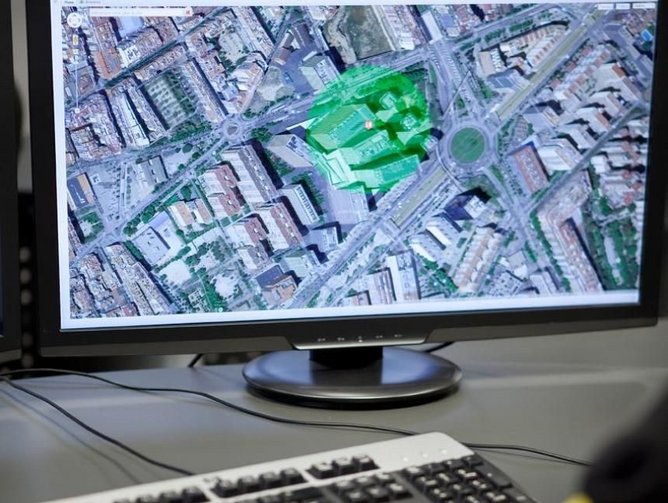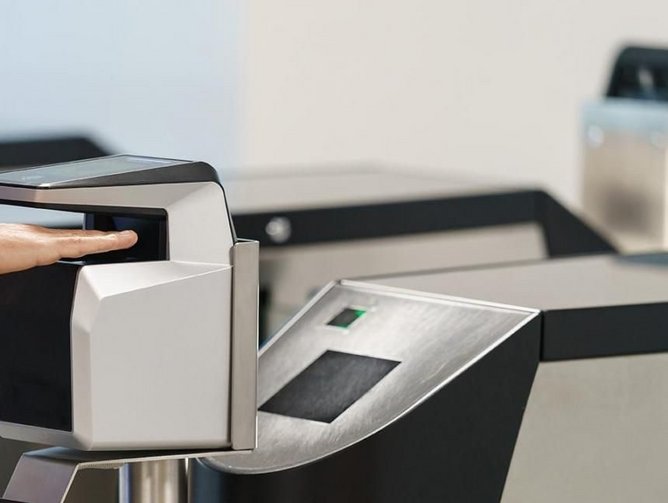Like so many others, the security industry is finding that digital transformation can uncover new solutions to its unique challenges. Multinational private security company Prosegur is spearheading this movement in the industry by implementing a ‘security transformation’. Christian de Suñer is Head of Integrated Technology Security Solutions at Prosegur Singapore. “In 2011, Prosegur started its Asian journey acquiring several local security agencies in Singapore. I helped with the integration of those companies into the Group at that time and now I lead the Integrated Technology Security Solutions department, the main role of which is to transform, with technology, our existing sites and secure new integrated security contracts – meaning manpower and technology together.”
One of the key developments put into practice by Prosegur has been the introduction of offsite ‘Smart Centres’, using technology to offer improved security services at the sites. “In some situations, we can have an operator seated in a control room performing multiple roles at once, such as digitally patrolling via cameras,” says de Suñer. “Instead of a one-hour physical patrol, they can do it in 15 minutes. The idea is to complement and support our physical patrols. We can achieve an increase in productivity and carry out more frequent patrols, while reducing our vulnerability to sick leave or weather problems. For example, we can do two physical tours a shift, and six digital – 8 in total, double the four physical patrols from before. This way we maximise the efficiency of our security services, providing higher security with less resources. If needed, smart centre operators can coordinate officers on the ground to respond. If there’s a false alarm, that’s caught at the smart centre.”
Beyond serving to expand security officers’ reach, technological solutions are also in place to notice unseen discrepancies. Though cameras have long been part of the security playbook, artificial intelligence and machine learning are uncovering new ways to process the visual data they return. “We’re using machine learning algorithms to automatically learn the difference between a normal movement pattern and an abnormal one in a surveillance camera scene,” says de Suñer. “The differences are detected at a pixel level, and in real time. The technology doesn’t know if it’s a person or a bird or a car – if the image differs from the previous one in a suspicious way, it will be flagged to our operator.”
When an incident does occur, POPS, the recently introduced Prosegur Operations Platform application, provides security officers with a suite of tools. These include bi-directional communications between the ground and command centre, access to operational procedures and reports for the site owner, all of which serve to integrate the different parts of the security operation. “One main benefit is that we can, at any point in time, send alerts to/from the Smart Centre. If there is a fire two blocks away from our site, we can send an alert to all our nearby sites and make them aware. We are able to send immediate information to make people aware of what they need.” By tracking and distributing information in this manner, Prosegur can also improve the safety of its security officers. “If an officer feels unsafe while patrolling in a threatening area, they can make the Smart Centre aware and then, every two minutes, the Smart Centre will send a signal to which they need to respond to confirm they are OK. If there is no response, our Smart Centre can remotely control the location, cameras and microphone of the mobile device to learn what is happening and assist our security officer.”
Such innovations require the support of partners, and Prosegur selects its solutions based purely on merit. “Prosegur is brand agnostic. We sell customised security solutions. We take in all the data and then we understand whatever is best for the client. We don’t manufacture anything and we don’t have a stock we need to sell because it’s out of date. It has to fit the client.” Bosch Security Systems has been a partner for a number of Prosegur’s projects, de Suñer explains. “We feel comfortable working with them, because their products, such as cameras, are of the highest quality and provide our clients a premium and long-lasting solution. We are now collaborating with them in several projects involving high-end condominiums. With the need for high quality solutions in mind, the Group has established a technology venture capital arm, using its security expertise to invest in promising companies in the space with an eye on facilitating their growth and obtaining a return on its investment. One beneficiary of this investment has been Octopus Systems, an Israeli company providing a state-of-the-art security platform solution. “Octopus fits with our security services fantastically. The way our operators are managing incidents is fast, efficient, and has helped us to win one of the biggest, if not the biggest, integrated security contracts in Singapore.”
De Suñer is clear that it’s never a matter of bringing technology to a site for the sake of it. Instead, it must always be appropriate for the customer. “Every time we want to transform a site, we need to do a proper survey – usually quite a few. We need to understand the culture of the site. Then we can start the security solution brainstorming stage.” Indeed, culture is a big focus for Prosegur, internally as much as in its sites. Motivating the digital transformation of security has been manpower issues stemming, in part, from an unfavourable view of working in the security industry. The government of Singapore is seeking to address this issue in the near future, mandating a maximum eight-hour shift and increasing pay. These moves should help the integration of technology with manpower, and de Suñer welcomes them. “The government is pushing the industry into more technology-based solutions, because only with the help of technology can we perform the same duties with the available manpower without compromising the security of the site. Training is a very important part of this. The industry, for instance, is bringing in virtual reality training, and on our side we’re trying to simplify jobs and redesign their tasks. Initially, officers often fear things will be more complicated, but they soon understand it’s actually going to get easier. Technology detects, manpower reacts. One clear example of this axiom is the video analytics from Davantis Technologies, a world-class solution for perimeter intrusion detection using CCTV images. Their technology is very easy to install (with machine learning capabilities) and even easier to operate, facilitating a very quick response of our security officers.”
The future for Prosegur Singapore heralds an increase in the number of integrated security sites, with the company aiming for them to make up 50% of its total in the near future. De Suñer views this transformation as truly existential, and has worked to ensure that Prosegur is fit to face the future. “We see the coming wave. It’s small right now, but in the next two or three years it’s going to be massive. Security agencies who aren’t adopting this technology approach are going to struggle. We need to move fast because service buyers are not going to greatly increase their security budgets. There is no other way than through technology.”







